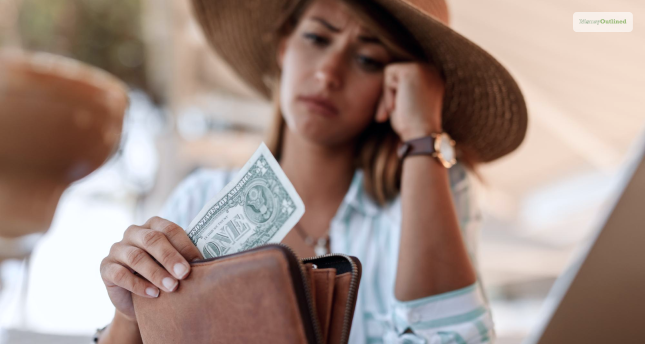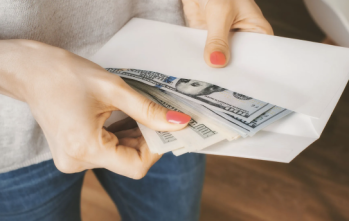Table Of Contents
- What Is Spending Addiction?
- Spending Addiction: Major Signs And Symptoms
- What Are The Major Causes Of Spending Addiction?
- How Is Spending Addiction Different From Spending Habit?
- Is Spending Addiction A Real Addiction (Mental Illness)?
- Best Ways To Cope From Spending Addiction
- 1. Find Other Ways Of Coping With Your Stress
- 2. Ask For Help From Others
- 3. Limit Your Access To Cash And Credit Cards
- 4. Limit Staying With Other Spending Addicts
- Wrapping Up
- Frequently Asked Questions!! (FAQs)
- What Is Spending Addiction?
- Spending Addiction: Major Signs And Symptoms
- What Are The Major Causes Of Spending Addiction?
- How Is Spending Addiction Different From Spending Habit?
- Is Spending Addiction A Real Addiction (Mental Illness)?
- Best Ways To Cope From Spending Addiction
- 1. Find Other Ways Of Coping With Your Stress
- 2. Ask For Help From Others
- 3. Limit Your Access To Cash And Credit Cards
- 4. Limit Staying With Other Spending Addicts
- Wrapping Up
- Frequently Asked Questions!! (FAQs)
Spending Addiction: What Is It, Causes, Symptoms, Treatment, And More
Spending addiction happens due to certain behaviors in consumers. It mostly involves compulsive buying or impulsive buying. People who have this addiction mostly delve into it to avoid negative emotions out of anxiety and depression. Here, the problem happens when people start purchasing unnecessary items that they do not really need despite having financial stress.
In this article, you will learn about spending addiction in general and how it works. Furthermore, you will learn about the signs, symptoms, and causes of spending addiction. Then, this article discusses the causes of spending addiction and will understand the negative effects of it. Finally, this article will provide you with some common solutions that can help you cope with spending addiction. Hence, to learn more, read on through to the end of the article.
What Is Spending Addiction?

According to Healthline,
?Shopping addiction, also known as compulsive buying disorder, or compulsive shopping, affects about 18 million adults in the United States. It?s described as the compulsion to spend money, regardless of need or financial means. While many people enjoy shopping as a treat or as a recreational activity, compulsive shopping is a mental health disorder and can cause severe consequences.?
However, shopping addiction is not a fully medically recognized disorder. This is because there have been plenty of debates on the legitimacy of the disorder. The people who are suffering from this disorder might have an addiction to a certain product. Some examples are clothes, jewelry, food, beauty items, books, stocks, or real estate.
The person who is going through a spending addiction gets the same rush of buying what they want as someone who is a drug addict. Here, the human brain associates this spending with pleasure. Hence, it goes on to recreate the spending processes again and again.
Furthermore, there is not much data on this addiction. Moreover, research data also show mixed results. While some studies show that women are more likely to have this addiction, other studies show that both men and women can have this addiction.
Additionally, other studies also show that the average age of spending addicts is 30. However, in some other studies, experts found that spending addiction happens more in people between 18 and 20. This is mostly the time when people are able to establish their own credit. Hence, there is a really high need for and scope of research in this area.
Spending Addiction: Major Signs And Symptoms

Shopping addicts are either impulsive buyers or compulsive buyers. To them, shopping is a form of escape from the disorder they are suffering from. Hence, compulsive or impulsive spending makes them feel good for the time being. They practice this addiction for instant gratification. However, after their purchase, they start feeling frustrated even more, and make things worse.
According to Very Well Mind,
?People who struggle with shopping addiction typically spend more time and money on shopping than they can afford, and many get into financial problems as a result of their overspending. […] Shopping addiction can involve impulsive and compulsive spending, producing a temporary high. People addicted to shopping often feel empty and unsatisfied with their purchases when they get home.?
An interesting factor among spending addicts is that they hide their problems well. In major cases, the people that know about their problem are their closed ones. In most cases, these people hide their purchases or seem as if they have enough money to spend.
The following are some of the major signs and symptoms that you can find in spending addicts:
- An obsession with weekly/daily purchases.
- Starts spending or shopping when they are in stress.
- Gets new credit before paying off the old ones.
- Gets intensely excited after a new purchase.
- Purchases unnecessary things or do not use what they buy.
- Lie or even steal to continue shopping.
- Regrets after feeling excited about the purchase. Despite that, they do not stop spending.
- Get into financial stress and are mostly unable to manage finances or get into debt.
- Continuously fails to stop this spending spree.
What Are The Major Causes Of Spending Addiction?

There are many factors that influence consumer buying behavior. However, there are some common causes behind spending addiction in consumers.
An article on Everyday Health explains –
?Certain environmental risk factors have also been found to put people at a higher risk of developing shopping addiction. […] Changes in your personal environment, such as a divorce, or moving away from your loved ones, could also influence emotionally driven compulsive buying, as some people report shopping to alleviate feelings of loneliness, helplessness, or guilt.?
Although there is no exact cause of shopping addiction, there are plenty of factors that play a role in it:
- Spending addiction mostly occurs alongside other disorders, like anxiety, stress, impulsive problems, personality, etc.
- The low self-esteem, sympathy, loneliness, isolation, etc., of the consumer, makes it difficult to control their desire to shop.
- People with spending addiction tend to be more materialistic than others. Hence, they try to seek status through material objects.
- They are more susceptible to marketing and advertisements. Companies also advertise and market their products in such a way that makes the purchase positive. Brands use various marketing tricks to trigger impulse buying in consumers. Basically, they specifically target those people that have impulsive tendencies.
- Like other addictions, the spending addiction also acts as an escape for people having emotional pain and difficulty. However, this addiction just makes things worse for the addicts.
How Is Spending Addiction Different From Spending Habit?

The major difference between spending habits and spending addiction is that the latter becomes the principal way for people to cope with stress. In this case, the addicts continue to spend even if they have financial stress and even if their acts are hurting other areas of their lives.
Furthermore, there is a worse part of having a spending addiction. Here, people who suffer from it, despite knowing that they suffer from a spending addiction, still struggle with their intrusive thoughts and shopping urges, which fuel their spending addiction.
The following are the major differences between spending habits and spending addiction:
| Spending Habit | Spending Addiction |
| The person purchases the item out of need and actually uses it. Do not feel the compulsion to buy. The consumers do not get into financial distress. They spend occasionally and at relative intervals. | The person does not need the item and hence does not use it after the purchase. Makes purchases out of compulsive behavior. The consumers face financial stress due to spending addiction. They spend frequently or out of intrusive thoughts. |
As already explained, a spending addiction can lead to financial problems for the individual. Hence, financial problems can lead to problems in the health and relationships of the individual as well. Despite such problems, those consumers fail to control their spending spree.
Is Spending Addiction A Real Addiction (Mental Illness)?

Although spending addiction is not a medically recognized mental illness, it still creates a lot of problems for the individual suffering from it. With the rise of the usage of the internet and digitization, spending addiction has increased manifold. This is because it has become easier to order and pay online, and you will receive the order in the comfort of your home.
Actually, spending addiction is quite old and controversial. However, medical experts still disagree with each other about whether this is a real addiction or not. Many experts believe that the symptoms in consumers grow because of the presence of a psychoactive substance. This further leads to the creation of major symptoms like physical tolerance and withdrawal. Hence, this is not an indication of a true addiction.
However, there are major factors that make spending addiction like other forms of addiction. Here are a few reasons for the same:
- People who spend a lot of time shopping devote a lot of time and money to spending money. This shows actual spending. While window shopping is not actual spending, compulsive buying is one since there is a pattern of spending money.
- Spending addicts spend money like it’s a ritual and follow a certain pattern of thought. They even plan time to shop.
- The spending addiction becomes pleasurable (for the time being), ecstatic, and relieving for the consumer. Basically, it acts as a short-term escape from depressive thoughts and anxiety.
- After the completion of the spending process, the consumer experiences guilt, disappointment, anger, shame, and regret.
Best Ways To Cope From Spending Addiction

Healthline explains –
?Shopping addiction can be difficult to manage, as making purchases is a normal part of everyday life. Everyone has to purchase food regularly, and things like clothing, personal products, and cars from time to time. But simply ceasing to buy can?t treat a shopping addiction.?
The following are some of the major steps you can take to cope with spending addiction:
1. Find Other Ways Of Coping With Your Stress
If you feel like spending your money, do something else that helps you cope with your stress. For example, go out for a walk, exercise, or for a run. Furthermore, you can also spend time with your loved ones if they are near you.
2. Ask For Help From Others
Ask your family members or your friends to regularly remind you why you want to stop spending on unnecessary items. Apart from that, you can also ask for help from another family member to shop for essentials.
3. Limit Your Access To Cash And Credit Cards
You can limit your access to credit cards by getting rid of them. Even remove the credit card from your shopping app. Only have a limited amount of cash in your wallet (only what is essential). This will help you stick to your budget and limit your spending.
4. Limit Staying With Other Spending Addicts
Although it is hard to do, this will help you in the long run. You will have to stop shopping with friends or family members who do compulsive shopping. If possible, limit your interaction with that person, as it is better for both of you (works both ways).
Basically, you will need to find alternative ways of handling your stress and anxiety. Although you can do it on your own through discipline, or you can see a counselor or a therapist
However, if you have a really high-level spending addiction, the mental health professional might provide you with medications as well. The medication mostly includes the use of selective serotonin reuptake inhibitors (SSRIs).
Wrapping Up
Hope this article was helpful for you to learn about spending addiction. If you feel you have this addiction, follow the aforementioned steps for now. Furthermore, try to consult a behavioral therapist who will give you exercises to change.
Frequently Asked Questions!! (FAQs)
The following are some of the major frequently asked questions that you can check out
Ans: Although spending addiction is not a medically recognized mental illness, it can occur due to mental conditions like impulsive or compulsive behaviors. People indulge in those activities for the short term so as to mask other depressive symptoms and mental distress.
Ans: A spending habit is shopping frequently and at regular intervals. However, this does not involve any emotional or financial stress. However, spending addiction happens due to compulsive or impulsive behaviors. The worst part is that despite knowing, people can?t stop spending due to intrusive thoughts.
Ans: One of the best ways to get rid of spending addiction is behavioral therapy or counseling. You can reach a mental health professional and ask for strategies for help. The professional might show you some behavioral therapy techniques or provide you with counseling or medications.
Ans: There is no single known cause of spending addiction. However, in general, spending addiction occurs due to impulse-control disorders like ADHD, OCD, anxiety, or even binge eating.
Ans: Spending addiction is a disorder that is increasing throughout the world. Almost 6% of the people in the US have this disorder, the majority of whom are women.
Continue Reading:











Leave A Comment